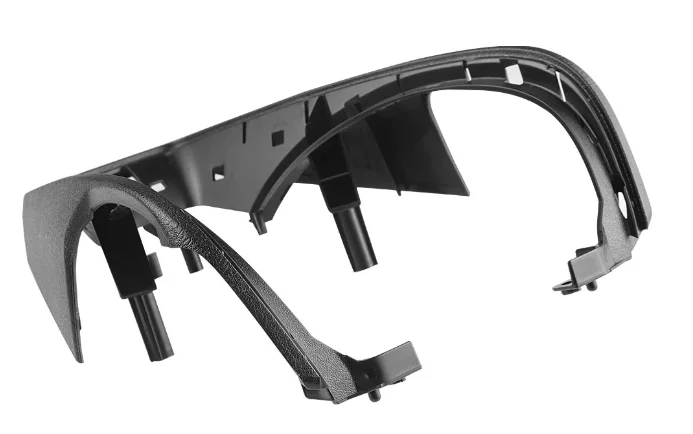The automotive industry is one of the most dynamic and innovative industries in the world. It is constantly evolving and improving, with new technologies and materials being developed all the time. One of the most important aspects of automotive manufacturing is the production of interior components, such as dashboards, door panels, and seats. These components are critical to the overall design and functionality of a vehicle, and they must be manufactured to the highest standards of quality and durability.
One of the most common methods for producing automotive interior components is injection molding. Injection molding is a manufacturing process in which molten plastic is injected into a mold cavity, where it cools and solidifies into the desired shape. This process is used to produce a wide range of products, from small parts like bottle caps to large components like car bumpers.
The manufacturing process of automotive interior injection mold involves several steps, each of which is critical to the overall quality and performance of the final product. In this blog post, Xuzhong will supply you with these steps and explore the key factors that contribute to the success of the process.
Step 1: Design and Engineering
The first step in the manufacturing process of automotive interior injection mold is design and engineering. This involves creating a 3D model of the component using computer-aided design (CAD) software. The design must take into account a range of factors, including the size and shape of the component, the materials to be used, and the specific requirements of the vehicle manufacturer.
Once the design is complete, it is reviewed by a team of engineers and designers to ensure that it meets all of the necessary specifications. This includes checking for any potential issues with the mold design, such as undercuts or areas that may be difficult to fill with plastic.
Step 2: Mold Fabrication
Once the design has been approved, the next step is to fabricate the mold. This involves creating a physical mold that will be used to produce the final component. The mold is typically made from steel or aluminum and is designed to withstand the high temperatures and pressures of the injection molding process.
The mold fabrication process involves several steps, including CNC machining, EDM (electrical discharge machining), and polishing. CNC machining is used to create the basic shape of the mold, while EDM is used to create the finer details and contours. Polishing is used to ensure that the mold surface is smooth and free of imperfections, which can affect the quality of the final product.
Step 3: Injection Molding
Once the mold has been fabricated, the next step is to begin the injection molding process. This involves heating the plastic resin to its melting point and injecting it into the mold cavity under high pressure. The plastic then cools and solidifies, taking on the shape of the mold.
There are several factors that must be carefully controlled during the injection molding process to ensure the quality and consistency of the final product. These include the temperature and pressure of the plastic, the speed and timing of the injection, and the cooling time and temperature.

Step 4: Post-Molding Operations
Once the component has been molded, there are several post-molding operations that must be performed to prepare it for use in a vehicle. These operations may include trimming, drilling, and assembly.
Trimming involves removing any excess plastic from the component, such as flash or sprues. Drilling may be necessary to create holes for mounting or attaching other components. Assembly may involve attaching the component to other parts of the vehicle, such as a dashboard or door panel.
Step 5: Quality Control
The final step in the manufacturing process of automotive interior injection mold is quality control. This involves inspecting the component to ensure that it meets all of the necessary specifications and standards. Quality control may involve visual inspection, dimensional measurement, and functional testing.
Visual inspection is used to check for any cosmetic defects, such as scratches or blemishes. Dimensional measurement is used to ensure that the component is the correct size and shape. Functional testing may involve testing the component under real-world conditions, such as subjecting it to high temperatures or vibrations.
Conclusion
The manufacturing process of automotive interior injection mold is a complex and highly technical process that requires careful attention to detail and a deep understanding of materials, design, and engineering. By following these steps and ensuring that each one is performed to the highest standards, manufacturers can produce high-quality, durable components that meet the needs of vehicle manufacturers and consumers alike. With the continued evolution of materials and technologies, the future of automotive interior injection mold manufacturing looks bright, with new innovations and improvements on the horizon.
Xuzhong
jinyong329@gmail.com


